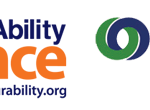
Hiring AdvantEdge: Price Chopper, ACCES-VR and Our Ability Come Together for Employment
November 15, 2016Ableism, Awareness and Activism at the Pomfret School
December 3, 2016How New Yorkers with Disabilities Voted
From our friends at NYSILC – this is an extremely interesting take on New York State voters with disabilities. We are a voting block that is growing in numbers and power. We are excited to be able to report these findings. We will be having further news posts on this topic in the next months.
It is important that we – Our Ability and the New York Business Leadership Network advocate for jobs issues which directly affect New Yorkers with disabilities.
NYSILC
New York State Independent Living Council, Inc.“Empowering New Yorkers with disabilities”
FOR IMMEDIATE RELEASE December 2, 2016
ALBANY, NY – The New York State Independent Living Council (NYSILC) conducted its third Presidential post-election poll to assess the voting habits and practices of New Yorkers with disabilities. Eight-hundred and fifty-six individuals randomly participated in the confidential, non-partisan poll to analyze the voting trends of New Yorkers with disabilities compared to those without disabilities. The poll examined the influence of demographics and disability status on voter concerns and presidential candidate choice.
“It has been just over a decade since New Yorkers with disabilities gained full access to their voting rights due to the first Help America Vote Act (HAVA) lawsuit in the country,” stated Brad Williams, Executive Director of NYSILC. “Our report sheds light on the voting trends and practices of our peers.”
The clear majority of New Yorkers with disabilities in this poll voted for Hillary Clinton (66%). They were mostly female, White/Caucasian, Gen-X and Baby-Boomers, tended to be distributed at the middle to higher end of education levels (peaking between Bachelor’s and Master’s degrees), from large cities and suburbs, were renters/leasers (versus homeowners), and operated motor vehicles, but clearly used public transportation more frequently than the participants who voted for Trump. While most of the Clinton voters polled were white females, ethnic and gender diversity was greater in this group than amongst the participants who voted for Trump.
The 19% of New Yorkers with disabilities in this poll who voted for Donald Trump were mostly males (with an almost equal level of support from females), White/Caucasian, Gen-X and Baby-Boomers, at a more balanced education level (peaking at a Bachelor’s degree), from the suburbs and rural areas, tended be homeowners (versus renters/leasers), and operated motor vehicles more, using public transportation less.
In the convergence of priority issues, the only common item between New Yorkers with disabilities who voted for Clinton versus Trump was “health care/cost of medications.” Otherwise, Trump voters tended to identify more with national issues, while Clinton voters identified more with issues that directly impacted their lives.
The comparison of voters with and without disabilities in the poll honed in on voting practices and some of the differences that still exist, such as with method of voting, poll worker training, privacy, and access issues.
Williams added, “Established pollsters must use our control question, or something similar, to assess the trends of people with disabilities as a legitimate voting constituency.”
The NYSILC 2016 Presidential Post-Election Poll Report is available at: http://www.nysilc.org/images/FINAL_NYSILC_2016_PRESIDENTIAL_POST_ELECTION_POLL_REPORT.docx.
###



